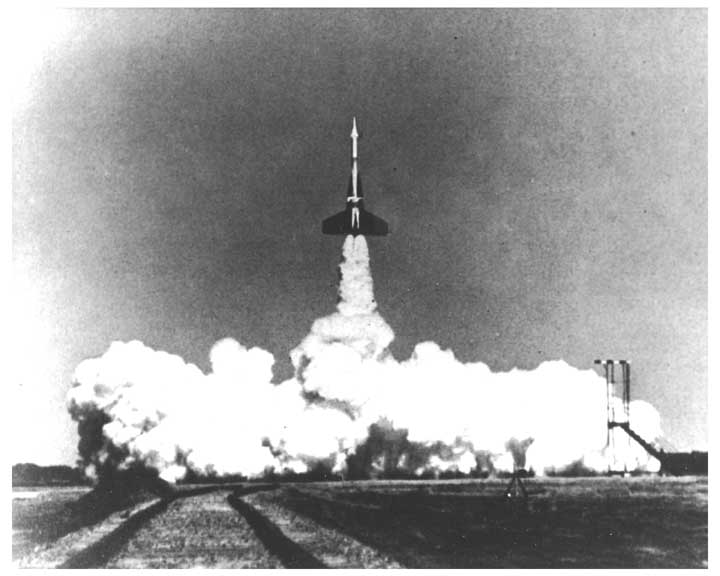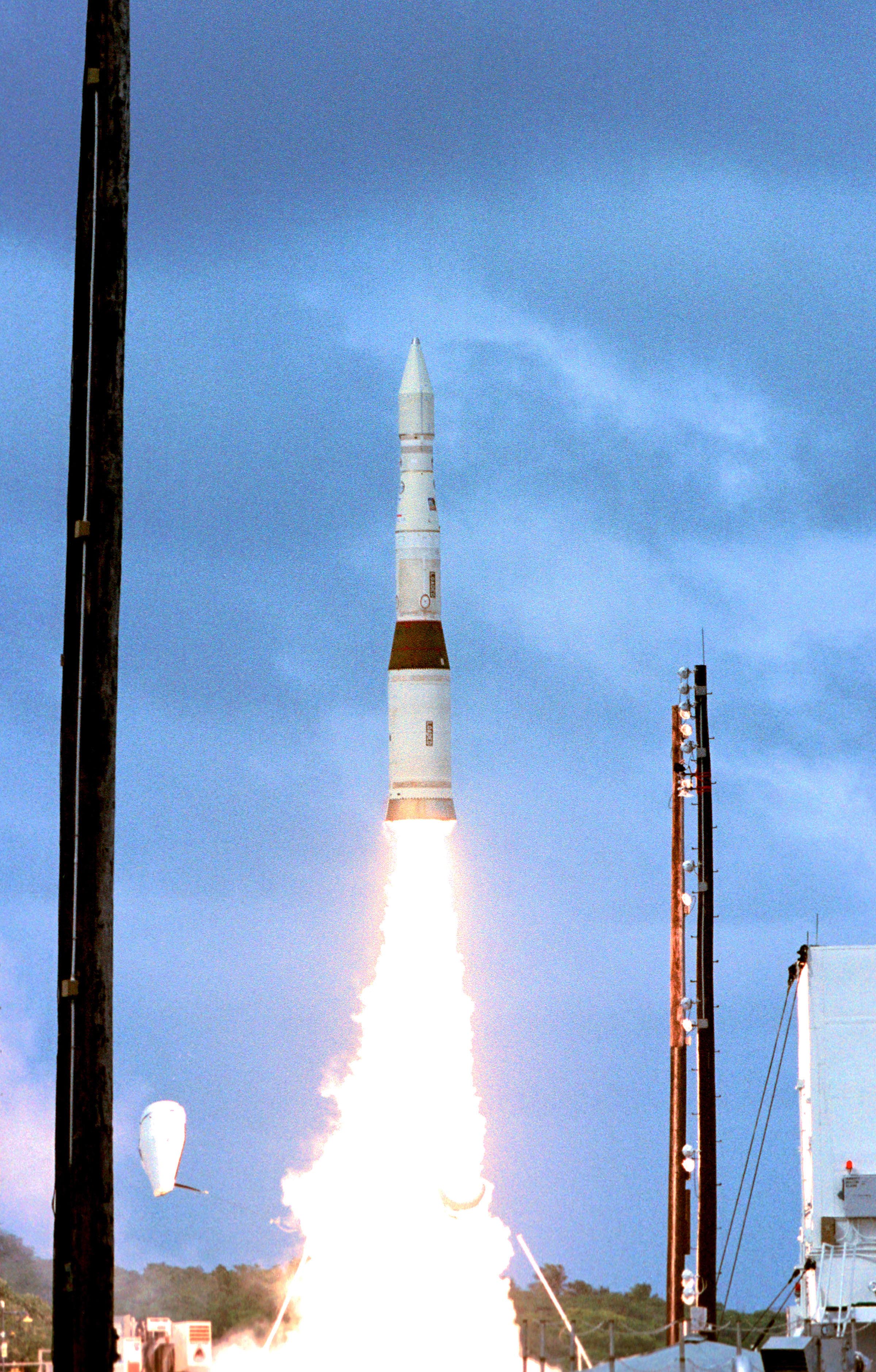|
Western Electric System 1393 Radar Course Directing Central
The Western Electric ''System 1393'' Radar Course Directing Central (RCDC) was a Cold War complex of radar/computer systems within the overall Improved Nike Hercules Air Defense Guided Missile System (separate from the missiles, storage and launch equipment, and command post equipment). The RCDC was installed at the "battery control areas" (Integrated Fire Control areas) of ~ each which was for commanding a nearby missile Launching Area (LA), firing a missile from the LA, and guiding a launched missile to a burst point near an enemy aircraft. Description The Radar Course Directing Central included a defense acquisition radar ("ACQR" e.g., General Electric AN/MPQ-43 High Power Acquisition Radar), a Target Tracking Radar (TTR), and a radar/computer subsystem for controlling the MIM-14 Nike-Hercules. The RCDC Director's Console with 4 cabinets included the electro-mechanical Servo Computer Cabinet with the analog ballistics computer ("Intercept Computer") which calculated the rel ... [...More Info...] [...Related Items...] OR: [Wikipedia] [Google] [Baidu] |
Nike Hercules IFC-functie Overzicht
Nike often refers to: * Nike (mythology), a Greek goddess who personifies victory * Nike, Inc., a major American producer of athletic shoes, apparel, and sports equipment Nike may also refer to: People * Nike (name), a surname and feminine given name *Nike, daughter of Shahrbaraz Arts, entertainment, and media * Nike Award, a Polish language literature prize *''Nike of Samothrace'', an ancient statue of the goddess Nike *Nike of Callimachus, an ancient statue of the goddess Nike * "Nikes" (song), by Frank Ocean from the album ''Blonde'' (2016) Military * Project Nike, a US Army missile project ** MIM-3 Nike Ajax, a solid fuel–propelled surface-to-air missile ** MIM-14 Nike-Hercules, a solid fuel–propelled surface-to-air missile ** Nike (rocket stage) ** Various US sounding rockets named after the upper stage used, including: *** Nike Apache *** Nike-Asp *** Nike-Cajun *** Nike-Deacon *** Nike Hawk *** Nike Hydac *** Nike Iroquois *** Nike Javelin *** Nike Malemute ... [...More Info...] [...Related Items...] OR: [Wikipedia] [Google] [Baidu] |
Nike Ajax
The United States Army's Nike Ajax was the world's first operational guided surface-to-air missile (SAM), entering service in 1954. Nike Ajax was designed to attack conventional bomber aircraft flying at high subsonic speeds and altitudes above . Nike was initially deployed in the US to provide defense against Soviet bomber attacks, and was later deployed overseas to protect US bases, as well as being sold to various allied forces. Some examples remained in use until the 1970s. Originally known simply as Nike, it gained the Ajax as part of a 1956 renaming effort that resulted from the introduction of Hercules. It was initially given the identifier SAM-A-7 (Surface-to-air, Army, design 7) as part of an early tri-service identification system, but later changed to MIM-3 (Mobile Interceptor Missile, design 3) in 1962.Nike was initially designated SAM-G-7, and later changed to SAM-A-7. Originally the Air Force used A while the Army used G, but the Air Force abandoned the 1947 tri-se ... [...More Info...] [...Related Items...] OR: [Wikipedia] [Google] [Baidu] |
Grand Forks AFB
Grand Forks Air Force Base (AFB) is a United States Air Force installation in northeastern North Dakota, located north of Emerado and west of Grand Forks. The host unit is the 319th Reconnaissance Wing (319 RW) assigned to the Air Combat Command (ACC) operating E/RQ-4B Global Hawk remotely piloted aircraft (RPA), in the intelligence, surveillance and reconnaissance (ISR) role. During the Cold War, GFAFB was a major installation of the Strategic Air Command (SAC), with B-52 bombers, KC-135 tankers, and Minuteman intercontinental ballistic missiles. History Grand Forks Air Force Base was established on 1 December 1955, with construction beginning in the fall of that year. It was occupied for use on 28 January 1957, and was named after the neighboring city of Grand Forks. Air Defense Command Due to the continuance of the Cold War between the United States and the Soviet Union, GFAFB was originally an Air Defense Command (ADC) fighter-interceptor air base. The site was chosen ... [...More Info...] [...Related Items...] OR: [Wikipedia] [Google] [Baidu] |
Safeguard Program
The Safeguard Program was a U.S. Army anti-ballistic missile (ABM) system designed to protect the U.S. Air Force's Minuteman ICBM silos from attack, thus preserving the US's nuclear deterrent fleet. It was intended primarily to protect against the very small Chinese ICBM fleet, limited Soviet attacks and various other limited-launch scenarios. A full-scale attack by the Soviets would easily overwhelm it. It was designed to allow gradual upgrades to provide similar lightweight coverage over the entire United States over time. Safeguard was the ultimate development of an ever-changing series of designs produced by Bell Labs that started in the 1950s with the LIM-49 Nike Zeus. By 1960 it was clear that Zeus offered almost no protection against a sophisticated attack using decoys. A new design emerged, Nike-X, with the ability to defend against attacks with hundreds of warheads and thousands of decoys, but the cost of the system was enormous. Looking for alternatives, the Sentinel pro ... [...More Info...] [...Related Items...] OR: [Wikipedia] [Google] [Baidu] |
National Missile Defense
National missile defense (NMD) is a generic term for a type of missile defense intended to shield an entire country against incoming missiles, such as intercontinental ballistic missile (ICBMs) or other ballistic missiles. This is also used to refer to the American nationwide antimissile program the United States has had in development since the 1990s. After the renaming in 2002, the term now refers to the entire program, not just the ground-based interceptors and associated facilities. This article focuses mainly on this system and a brief history of earlier systems which led to it. Other elements that could potentially be integrated into NMD include anti-ballistic missiles, or sea-based, space-based, laser, and high altitude missile systems. The NMD program is limited in scope and designed to counter a relatively small ICBM attack from a less sophisticated adversary. Unlike the earlier Strategic Defense Initiative program, it is not designed to be a robust shield against a ... [...More Info...] [...Related Items...] OR: [Wikipedia] [Google] [Baidu] |
IEEE Computer Society
The Institute of Electrical and Electronics Engineers (IEEE) is a 501(c)(3) professional association for electronic engineering and electrical engineering (and associated disciplines) with its corporate office in New York City and its operations center in Piscataway, New Jersey. The mission of the IEEE is ''advancing technology for the benefit of humanity''. The IEEE was formed from the amalgamation of the American Institute of Electrical Engineers and the Institute of Radio Engineers in 1963. Due to its expansion of scope into so many related fields, it is simply referred to by the letters I-E-E-E (pronounced I-triple-E), except on legal business documents. , it is the world's largest association of technical professionals with more than 423,000 members in over 160 countries around the world. Its objectives are the educational and technical advancement of electrical and electronic engineering, telecommunications, computer engineering and similar disciplines. History Orig ... [...More Info...] [...Related Items...] OR: [Wikipedia] [Google] [Baidu] |
IEEE Annals Of The History Of Computing
The ''IEEE Annals of the History of Computing'' is a quarterly peer-reviewed academic journal published by the IEEE Computer Society. It covers the history of computing, computer science, and computer hardware. It was founded in 1979 by the AFIPS, in particular by Saul Rosen, who was an editor until his death in 1991. The journal publishes scholarly articles, interviews, "think pieces," and memoirs by computer pioneers, and news and events in the field. It was established in July 1979 as ''Annals of the History of Computing'', with Bernard Galler as editor-in-chief. The journal became an IEEE publication in 1992, and was retitled to ''IEEE Annals of the History of Computing''. The 2020 impact factor was 0.741. The current editor in chief is Gerardo Con Diaz with the University of California, Davis. See also * ''Technology and Culture'' * '' Information & Culture'' * Computer History Museum * Charles Babbage Institute References External links * Annals of the History of Compu ... [...More Info...] [...Related Items...] OR: [Wikipedia] [Google] [Baidu] |
Sprint (missile)
The Sprint was a two-stage, solid-fuel anti-ballistic missile (ABM), armed with a W66 enhanced-radiation thermonuclear warhead used by the United States Army from 1975-1976. It was designed to intercept incoming reentry vehicles (RV) after they had descended below an altitude of about , where the thickening air stripped away any decoys or radar reflectors and exposed the RV to observation by radar. As the RV would be traveling at about , Sprint had to have phenomenal performance to achieve an interception in the few seconds before the RV reached its target. Sprint accelerated at 100 ''g'', reaching a speed of in 5 seconds. Such a high velocity at relatively low altitudes created skin temperatures up to , requiring an ablative shield to dissipate the heat. The high temperature caused a plasma to form around the missile, requiring extremely powerful radio signals to reach it for guidance. The missile glowed bright white as it flew. Sprint was the centerpiece of the Nike-X sy ... [...More Info...] [...Related Items...] OR: [Wikipedia] [Google] [Baidu] |
LIM-49 Spartan
The LIM-49 Spartan was a United States Army anti-ballistic missile, designed to intercept attacking nuclear warheads from Intercontinental ballistic missiles at long range and while still outside the atmosphere. For actual deployment, a five-megaton thermonuclear warhead was planned to destroy the incoming ICBM warheads. It was part of the Safeguard Program. The Spartan was the latest and, as it turned out, final development in a long series of missile designs from the team of Bell Laboratories and Douglas Aircraft Company that started in the 1940s with the Nike. Spartan was developed directly from the preceding LIM-49 Nike Zeus, retaining the same tri-service identifier, but growing larger and longer ranged, from the Zeus' to approximately . The Spartan was superseded by the Nike-X project, later becoming the Sentinel Program. This was eventually cancelled and replaced with the much smaller Safeguard Program. Spartans were deployed as part of the Safeguard system from Octobe ... [...More Info...] [...Related Items...] OR: [Wikipedia] [Google] [Baidu] |
Anti-ballistic Missile
An anti-ballistic missile (ABM) is a surface-to-air missile designed to counter ballistic missiles (missile defense). Ballistic missiles are used to deliver nuclear weapon, nuclear, Chemical weapon, chemical, Bioagent, biological, or conventional weapon, conventional warheads in a ballistics, ballistic flight trajectory. The term "anti-ballistic missile" is a generic term conveying a system designed to intercept and destroy any type of ballistic threat; however, it is commonly used for systems specifically designed to counter intercontinental ballistic missiles (ICBMs). Current counter-ICBM systems There are a limited number of systems worldwide that can intercept intercontinental ballistic missiles: * The Russian A-135 anti-ballistic missile system (renamed in 2017 to A-235) is used for the defense of Moscow. It became operational in 1995 and was preceded by the A-35 anti-ballistic missile system. The system uses ABM-4 Gorgon, Gorgon and Gazelle (missile), Gazelle missiles pre ... [...More Info...] [...Related Items...] OR: [Wikipedia] [Google] [Baidu] |
Georgia Tech
The Georgia Institute of Technology, commonly referred to as Georgia Tech or, in the state of Georgia, as Tech or The Institute, is a public research university and institute of technology in Atlanta, Georgia. Established in 1885, it is part of the University System of Georgia and has satellite campuses in Savannah, Georgia; Metz, France; Shenzhen, China; and Singapore. The school was founded as the Georgia School of Technology as part of Reconstruction plans to build an industrial economy in the post-Civil War Southern United States. Initially, it offered only a degree in mechanical engineering. By 1901, its curriculum had expanded to include electrical, civil, and chemical engineering. In 1948, the school changed its name to reflect its evolution from a trade school to a larger and more capable technical institute and research university. Today, Georgia Tech is organized into six colleges and contains about 31 departments/units, with emphasis on science and technology. I ... [...More Info...] [...Related Items...] OR: [Wikipedia] [Google] [Baidu] |
Sperry Rand
Sperry Corporation was a major American equipment and electronics company whose existence spanned more than seven decades of the 20th century. Sperry ceased to exist in 1986 following a prolonged hostile takeover bid engineered by Burroughs Corporation, which merged the combined operation under the new name Unisys. Some of Sperry's former divisions became part of Honeywell, Lockheed Martin, Raytheon Technologies, and Northrop Grumman. The company is best known as the developer of the artificial horizon and a wide variety of other gyroscope-based aviation instruments like autopilots, bombsights, analog ballistics computers and gyro gunsights. In the post-WWII era the company branched out into electronics, both aviation related, and later, computers. History Early history The company was founded in 1910 by Elmer Ambrose Sperry, as the Sperry Gyroscope Company, to manufacture navigation equipment—chiefly his own inventions the marine gyrostabilizer and the gyrocompass—at ... [...More Info...] [...Related Items...] OR: [Wikipedia] [Google] [Baidu] |







